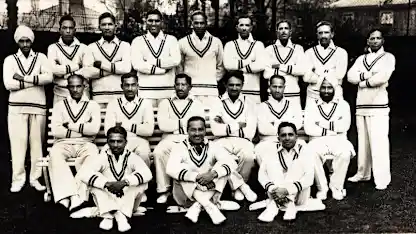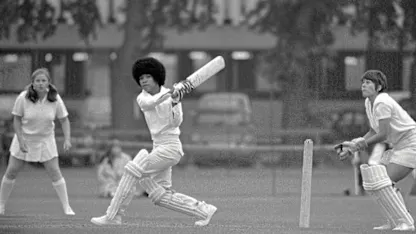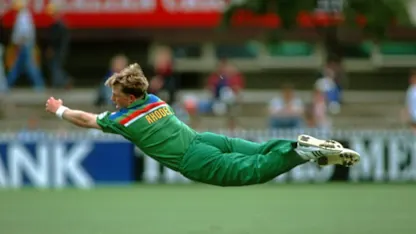Cricket
History of Cricket

The Indian cricket team in the 1930s
20th Century Cricket
When the Imperial Cricket Conference (as the ICC was originally called) was founded in 1909, only England, Australia and South Africa were members. However, the West Indies (1928), New Zealand (1930) and India (1932) became Test nations before the Second World War and Pakistan (1952) soon afterwards. Cricket soared in popularity in these countries with the advent of Test Cricket and domestic competitions gradually became more formalized with the West Indies formulating an island-based First-Class competition, New Zealand continuing their Plunkett Shield that has origins back to 1906, India introducing the Ranji trophy in 1934 and Pakistan founding the Quaid-e-Azam trophy in 1953.
Women’s cricket also took its first significant international steps at the start of the 20th century and the first ever Test Match was played between England and Australia in 1934. The founding of the International Women’s Cricket Council in 1958 (since merged with ICC in 2005), further developed the Women’s game and it was in 1973 that the first Cricket World Cup of any kind took place. The Women’s World Cup was hosted by England who went on to claim the inaugural cup with captain Rachel Heyhoe-Flint leading the way.
After a postwar boom, slow play and lower numbers of runs characterized the 1950s, and this defensive nature of county cricket led to progressively decreased attendance. In response, in 1963 English county teams began playing a version of cricket with games of only one innings each and a maximum number of overs per innings. Limited-overs cricket grew in popularity and, in 1969 a national league was created which consequently caused a reduction in the number of matches in the County Championship.

First Women's International
In 1970 South Africa were suspended indefinitely from international cricket competition due to apartheid and so - starved of top-level competition, the South African Cricket Board began funding so-called “rebel tours” for international players to form teams and tour South Africa. The rebel tours continued into the 1980s but when it became clear that apartheid was ending South Africa was welcomed back into international sport in 1991. South Africa played in the 1992 World Cup and then soon after played their ‘return’ Test Match against the West Indies in Barbados in April.
The first limited-over international match took place at Melbourne Cricket Ground in 1971 as a time-filler after a Test match had been abandoned because of heavy rain on the opening days. The International Cricket Conference (as it was then) reacted to this development by organising the first Men’s Cricket World Cup in England in 1975, with all the Test-playing nations of the time taking part and West Indies triumphing at Lord’s in the final.
In 1977 Kerry Packer signed several of the best players in the world to a privately run cricket league outside the structure of international cricket. World Series Cricket hired some of the banned South African players and allowed them to show off their skills in an international arena against other world-class players. This only lasted two years, but the longer term results of World Series Cricket have included the introduction of significantly higher player salaries and innovations such as coloured kit and night games. It wasn’t long before many of these innovations crossed over to international cricket.

South Africa return to international cricket
Such was the success of the inaugural World Cup, it was decided that it would become a regular part of the calendar with further Cricket World Cups were held in England in 1979 and 1983 before the tournament moved to India and Pakistan in 1987, which was the last event to be played using a red ball with white clothing. 1992 dawned a new era of World Cup Cricket with floodlights, coloured clothing and a white ball being utilised.
In 1992, the use of a third umpire to adjudicate run-out appeals with television replays was introduced for the first time in the Test series between South Africa and India. The third umpire's duties have subsequently expanded to include decisions on other aspects of play such as stumpings, catches and boundaries.
The international game continued to grow with several ICC Associate and Affiliate Members becoming involved in expanding domestic competitions and then on the international scene. And in the closing years of the 20th century, three of those countries also became Test nations: Sri Lanka (1982), Zimbabwe (1992) and Bangladesh (2000).